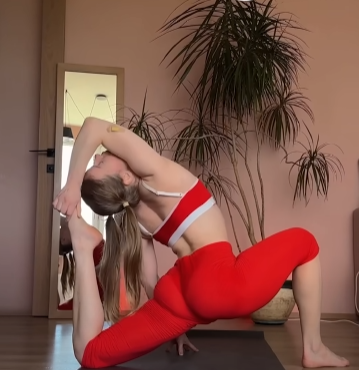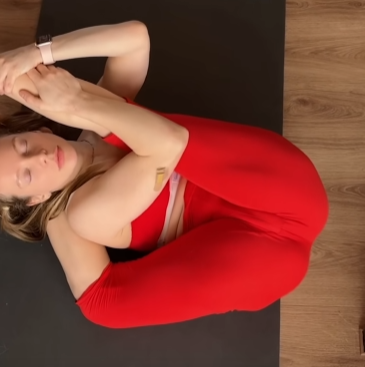
Balance is one of the most vital components of physical health, yet it’s often overlooked in favor of strength or flexibility. As we age, good balance helps prevent falls and injuries, while in everyday life, it supports posture, coordination, and overall physical confidence. Whether you’re an athlete, a yogi, or just someone looking to improve your physical function, incorporating balance poses into your routine can transform the way your body moves and feels. In this guide, we’ll explore essential balance poses that target different parts of the body to improve overall stability.
1. Tree Pose (Vrikshasana)
Tree Pose is one of the most iconic and beginner-friendly balance poses in yoga. It strengthens the legs, tones the core, and enhances focus.
How to do it:
- Start in a standing position (Mountain Pose).
- Shift your weight onto your left foot.
- Bring your right foot up and place it on the inside of your left thigh or calf (avoid the knee).
- Bring your hands together at your heart or stretch them overhead.
- Focus your gaze on a fixed point in front of you to help maintain balance.
- Hold for 30 seconds, then switch sides.
Benefits:
- Improves ankle and calf strength.
- Encourages concentration.
- Teaches body awareness and stillness.

2. Warrior III (Virabhadrasana III)
This powerful pose challenges your balance while engaging your entire body—especially the legs, glutes, and core.
How to do it:
- Begin in a high lunge with your right foot forward.
- Shift your weight onto your right foot.
- As you inhale, lean forward and lift your left leg back until your body is in a straight line from head to heel.
- Extend your arms forward or bring your palms together at your heart.
- Keep your hips level and core tight.
- Hold for 20–30 seconds and repeat on the other side.
Benefits:
- Builds strength in the lower body.
- Enhances stability through core engagement.
- Promotes full-body coordination.
3. Eagle Pose (Garudasana)
Eagle Pose is excellent for building strength and stability in the legs while also improving joint flexibility.
How to do it:
- Stand tall and shift your weight to your left foot.
- Cross your right thigh over your left thigh.
- Wrap your right foot behind your left calf (if possible).
- Bring your arms in front, wrap your right arm under the left, and bring palms together.
- Sit low as if sitting in a chair.
- Hold for 20–30 seconds, then switch sides.
Benefits:
- Increases focus and concentration.
- Strengthens ankles, thighs, and calves.
- Opens shoulders and upper back.

4. Half Moon Pose (Ardha Chandrasana)
This dynamic pose strengthens the legs and side body while challenging your balance in a lateral plane.
How to do it:
- Begin in Triangle Pose with your right foot forward.
- Place your right hand on the ground (or a block) about a foot in front of your right foot.
- Shift weight into your right foot and lift your left leg until it’s parallel to the ground.
- Open your chest and hips to the side.
- Extend your left arm upward and gaze at your left fingertips if possible.
- Hold for 30 seconds, then repeat on the opposite side.
Benefits:
- Builds lateral balance and strength.
- Opens the chest and hips.
- Improves spatial awareness.
5. Chair Pose with Heel Raise
Adding a heel raise to the traditional Chair Pose increases instability, challenging your body to engage deeply through the core and ankles.
How to do it:
- Start standing with feet hip-width apart.
- Lower into Chair Pose by bending your knees and reaching arms overhead.
- While holding the position, slowly lift your heels off the floor.
- Engage your core and calves.
- Try to hold for 20–30 seconds.
Benefits:
- Strengthens thighs and calves.
- Enhances balance through the toes and arches.
- Trains your center of gravity.

6. Dancer’s Pose (Natarajasana)
This graceful backbend improves balance, opens the chest, and strengthens the standing leg.
How to do it:
- Stand in Mountain Pose.
- Shift weight onto your right foot.
- Bend your left knee and grab your left foot with your left hand behind you.
- Lift your left leg and lean your torso forward.
- Reach your right arm forward for balance.
- Keep your core tight and focus on a fixed point.
- Hold for 20–30 seconds, switch sides.
Benefits:
- Stretches hip flexors and shoulders.
- Strengthens legs and spine.
- Improves posture and focus.
7. Standing Knee Raise
This simple but effective pose builds foundational balance and strengthens the hip flexors and core.
How to do it:
- Stand tall with feet hip-width apart.
- Raise your right knee to hip level.
- Engage your core and find a focal point.
- You can also hold your shin or place hands on hips.
- Hold for 30 seconds, then switch legs.
Benefits:
- Enhances core control.
- Improves posture and upright stability.
- Builds ankle strength and control.

8. Plank with Shoulder Taps
This dynamic movement engages the core and stabilizing muscles that control balance in more athletic movements.
How to do it:
- Start in a high plank position.
- Without swaying your hips, lift your right hand and tap your left shoulder.
- Return to plank and repeat on the other side.
- Continue slowly for 30–60 seconds.
Benefits:
- Strengthens deep core muscles.
- Enhances proprioception (your body’s sense of position).
- Improves coordination and balance under movement.
9. Side Plank (Vasisthasana)
Side plank enhances lateral stability and core strength, especially in the obliques and hip stabilizers.
How to do it:
- Begin in a regular plank.
- Shift your weight onto your right hand and the outer edge of your right foot.
- Stack your left foot on top and lift your left arm to the sky.
- Keep your body in one straight line.
- Hold for 30 seconds, then switch sides.
Benefits:
- Improves side body strength.
- Builds shoulder and wrist stability.
- Promotes overall core balance.
10. Toe Stand (Padangusthasana)
This advanced pose challenges even experienced practitioners by testing strength, balance, and flexibility.
How to do it:
- Begin in Tree Pose with your right foot on the inner thigh.
- Slowly lower yourself to sit on your left heel, keeping the right foot on the thigh.
- Bring your hands to heart center for balance.
- Hold for 10–20 seconds and rise carefully.
Benefits:
- Strengthens ankles, knees, and thighs.
- Improves deep focus and inner stillness.
- Encourages breath control and grounding.
Final Thoughts
Improving balance is more than just standing on one foot—it’s about training your entire body to work together. The key to success with these poses is consistency. Practicing them daily, even for a few minutes, can bring significant improvements in how you move, stand, and feel in your body.
Balance is a skill, and like any skill, it improves with attention, patience, and practice. Add these essential poses to your regular workout or yoga routine and observe the shift—not just physically, but mentally, as your confidence and control begin to grow. Stability isn’t just about your body—it reflects your presence, focus, and strength from within.


